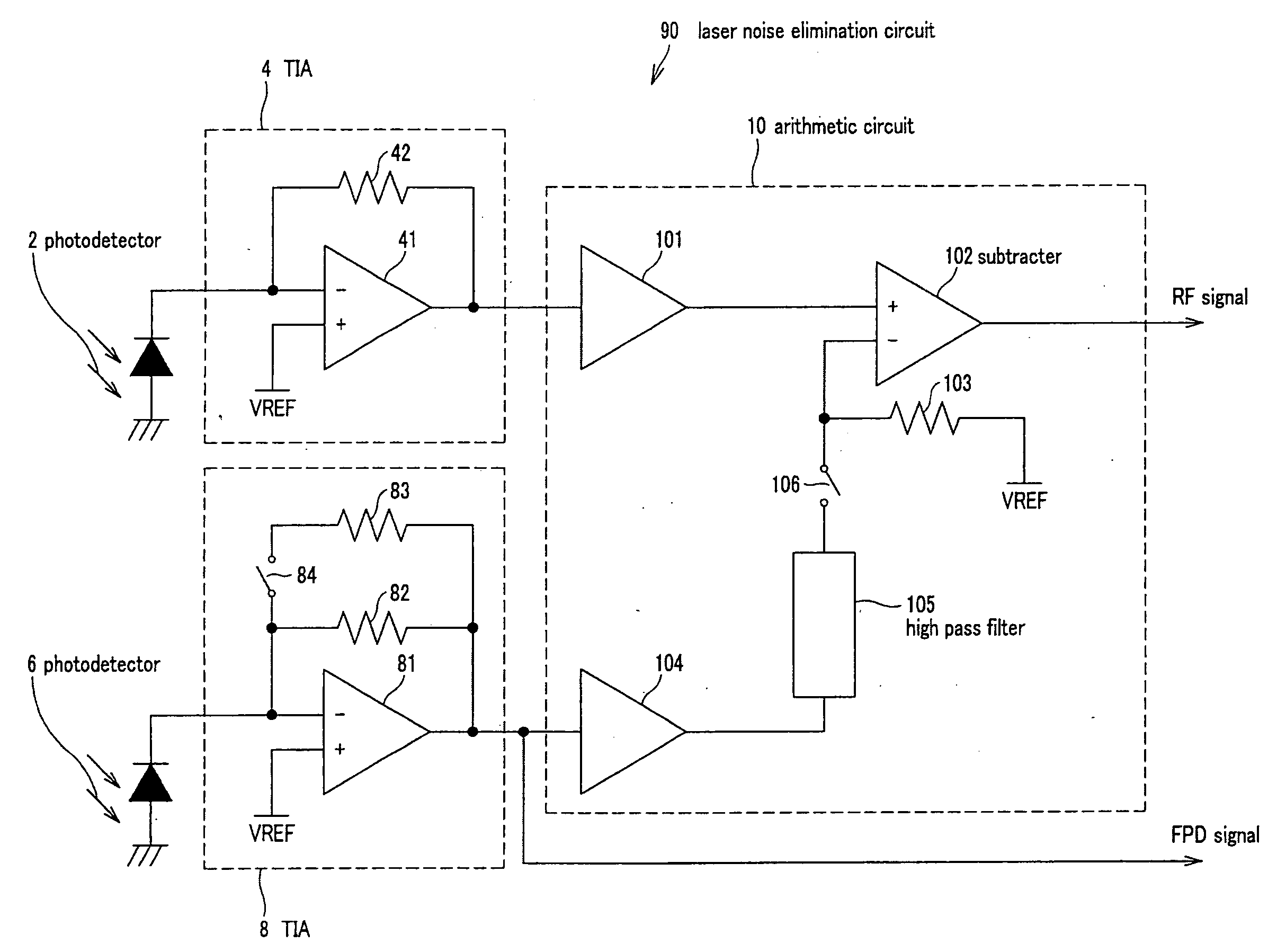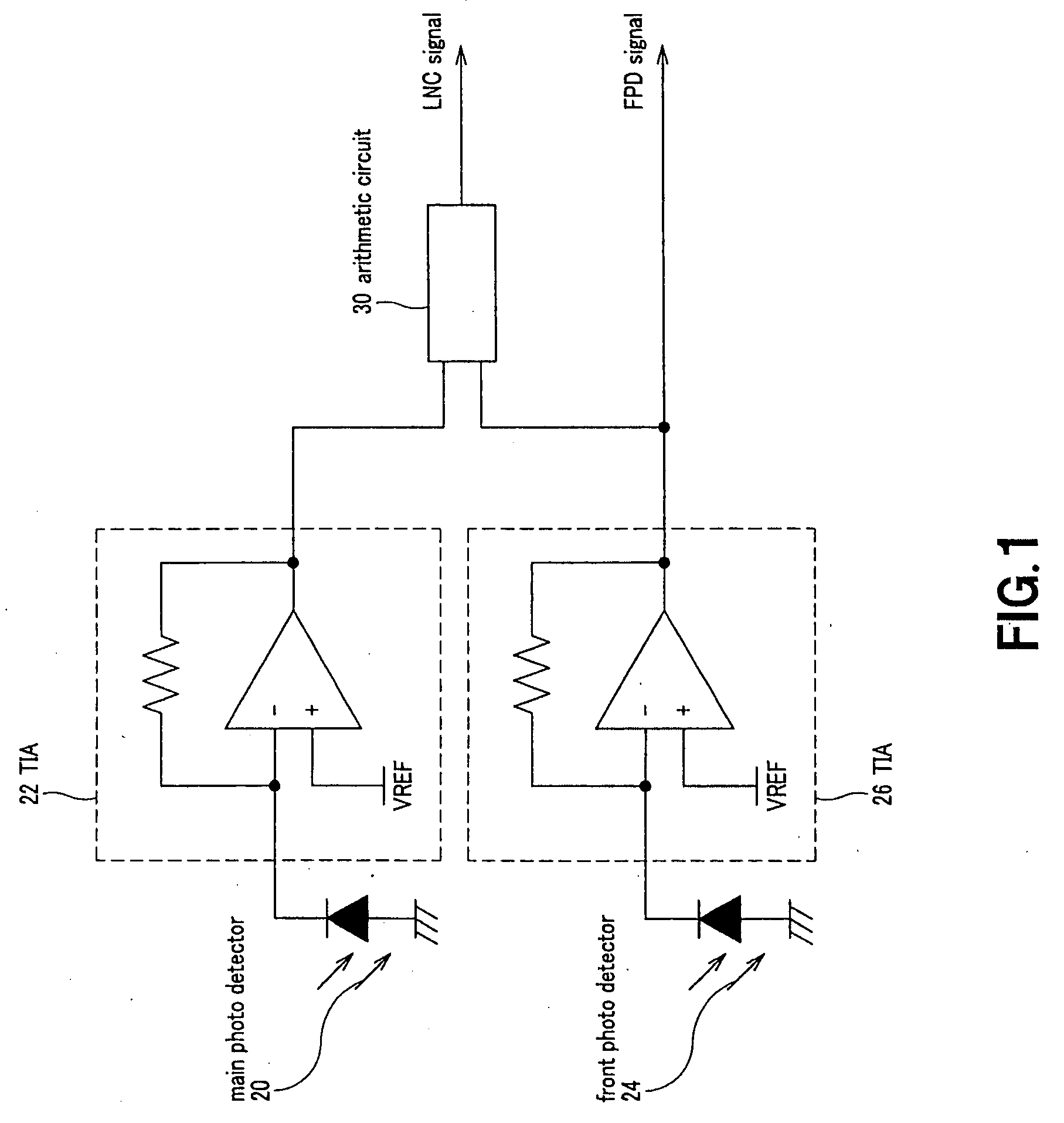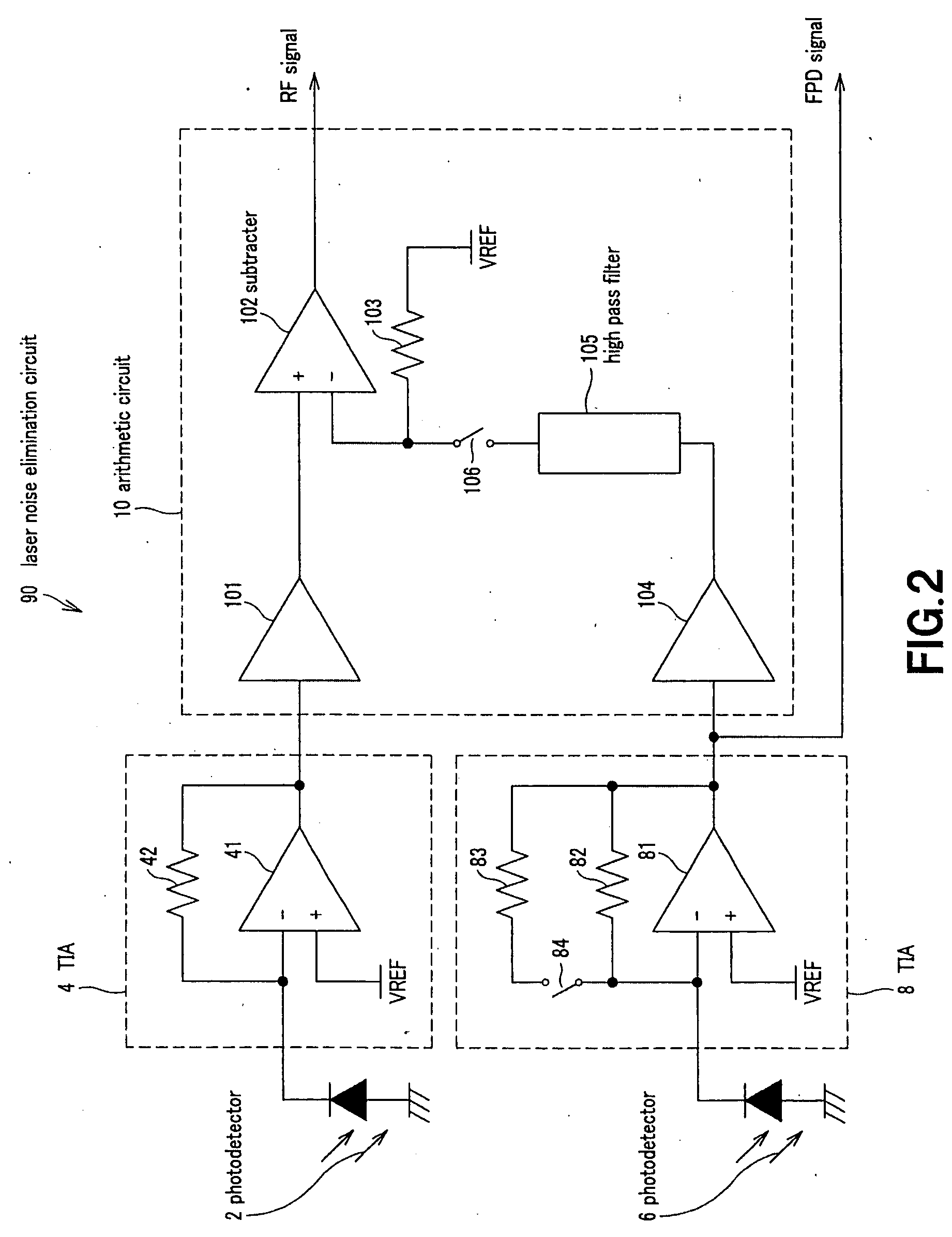Laser noise elimination circuit and optical disc device
a laser noise and optical disc technology, applied in the direction of optical beam sources, instruments, record information storage, etc., can solve the problems of affecting the signal reproduced from the optical disc, servo signal components, and components close to dc, so as to reduce the output level of the laser beam source, efficiently and effectively eliminate the laser noise, and raise the level of the laser noise contained
- Summary
- Abstract
- Description
- Claims
- Application Information
AI Technical Summary
Benefits of technology
Problems solved by technology
Method used
Image
Examples
first embodiment
[First Embodiment]
[0021]FIG. 2 is a schematic circuit diagram of the first embodiment of laser noise elimination circuit according to the invention, illustrating the configuration thereof. Referring to FIG. 2, laser noise elimination circuit 90 comprises a photo detector 2 for receiving reflected light of the laser beam emitted from a laser beam source (not shown) for a semiconductor laser and the like and irradiated onto an optical disc (not shown) for photoelectric conversion, a TIA 4 for converting the electric current signal output from the photo detector 2 into a voltage signal, a photo detector 6 for receiving part of the laser beam emitted from the laser beam source for photoelectric conversion, a TIA 8 for converting the electric current signal output from the photo detector 6 into a voltage signal and an arithmetic circuit 10 for eliminating the laser noise component contained in the RF signal input from the TIA 4 by means of the RF signal and the FPD signal input from the ...
second embodiment
[Second Embodiment]
[0030]FIG. 3 is a schematic circuit diagram of the second embodiment of laser noise elimination circuit according to the invention, illustrating the configuration thereof. Note that the components same as those of the first embodiment of FIG. 2 are denoted respectively by the same reference symbols and will not be described any further. While a laser noise elimination circuit 90′ of this embodiment operates same as the first embodiment and provides advantages similar to those of the first embodiment, its configuration slightly differs from the first embodiment. While the TIA 14 of the laser noise elimination circuit 90′ of this embodiment is made to show a fixed gain, the laser noise elimination circuit 90′ comprises two signal routes for transmitting the FPD signal output from the TIA 14 including one for transmitting the signal to high pass filter 105 and then to the subtracter 102 and also to a changeover switch 113 by way of an amplifier 110 showing a high gai...
third embodiment
[Third Embodiment]
[0033]FIG. 4 is a schematic circuit diagram of the third embodiment of laser noise elimination circuit according to the invention, illustrating the configuration thereof. Note that the components same as those of the first embodiment of FIG. 2 are denoted respectively by the same reference symbols and will not be described any further. The arithmetic circuit 10 may be made free from a high pass filter as in the case of the laser noise elimination circuit 91 of this embodiment depending on the accuracy of servo operation of the optical pickup.
[0034] In this embodiment, the noise level of the FPD signal is made to match that of the RF signal at the input section of the arithmetic circuit 10 so as to obtain a signal showing a high power level in a reproduction mode where the laser power is low and facilitate the APC control operation by raising the gain of the TIA 8 and hence the level of the FPD signal in a reproduction mode. Additionally, the FPD circuit is prevent...
PUM
| Property | Measurement | Unit |
|---|---|---|
| photoelectric | aaaaa | aaaaa |
| photoelectric conversion | aaaaa | aaaaa |
| current | aaaaa | aaaaa |
Abstract
Description
Claims
Application Information
 Login to View More
Login to View More - R&D
- Intellectual Property
- Life Sciences
- Materials
- Tech Scout
- Unparalleled Data Quality
- Higher Quality Content
- 60% Fewer Hallucinations
Browse by: Latest US Patents, China's latest patents, Technical Efficacy Thesaurus, Application Domain, Technology Topic, Popular Technical Reports.
© 2025 PatSnap. All rights reserved.Legal|Privacy policy|Modern Slavery Act Transparency Statement|Sitemap|About US| Contact US: help@patsnap.com



